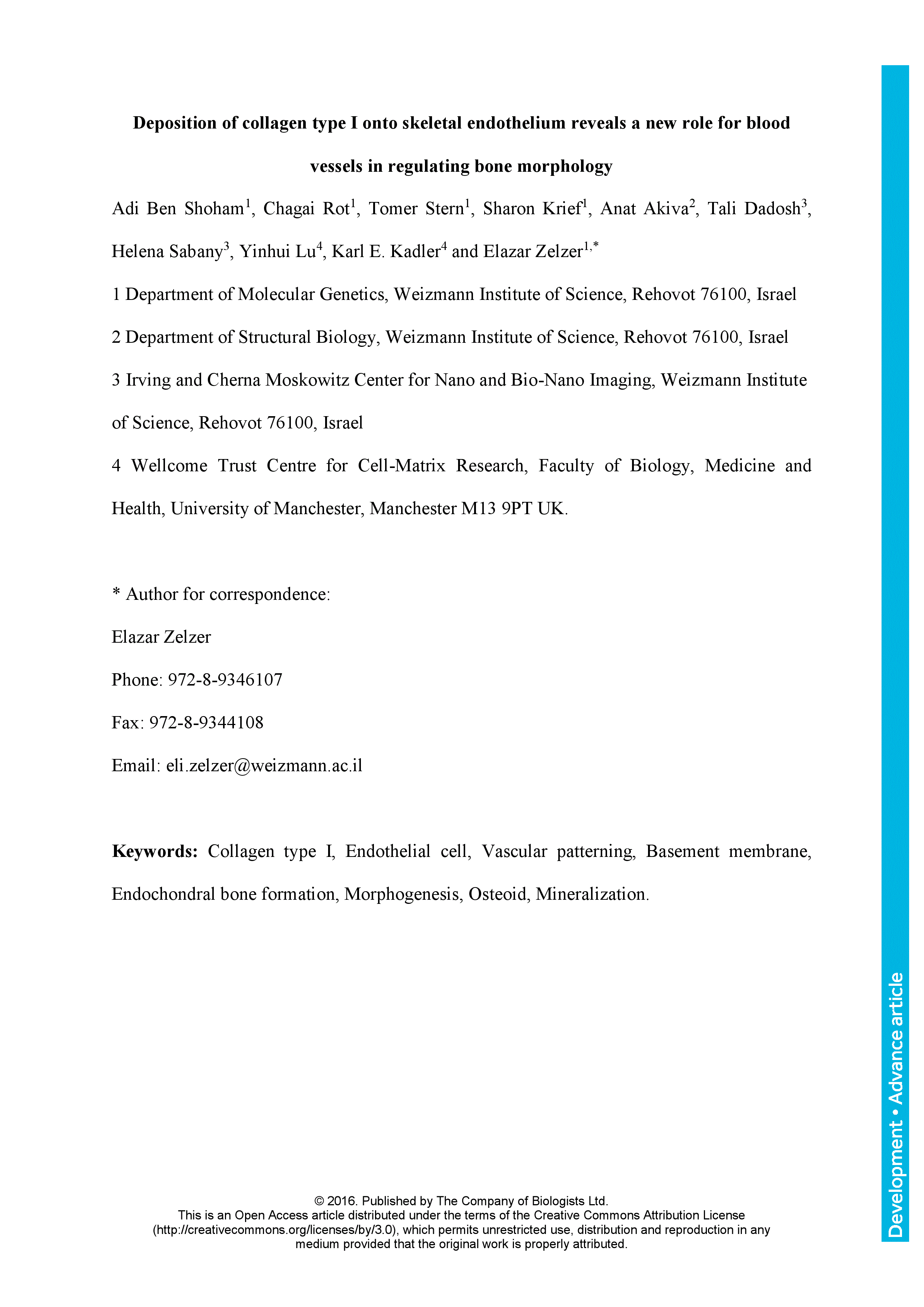In recent years, blood vessels have been shown to be involved in morphogenesis of various organs. The vasculature is also known to be essential for endochondral bone development; yet, the underlying mechanism has remained elusive. Here, we show that a unique composition of blood vessels facilitates a role of the endothelium in bone mineralization and morphogenesis. Immunostaining and electron microscopy showed that the endothelium in developing bones lacks basement membrane, which normally isolates the vessel from its surroundings. Further analysis revealed the presence of collagen type I, secreted by osteoblasts, on the endothelial wall of these vessels. Because collagen type I is the main component of the osteoid, which serves as a template for mineral deposition during endochondral ossification, we hypothesized that the bone vasculature guides the formation of the collagenous template and consequently of the mature bone. Indeed, analysis showed that some of the bone vessels undergo mineralization. Moreover, the vascular pattern at each embryonic stage prefigured the mineral distribution pattern observed one day later. Finally, perturbation of vascular patterning by overexpressing Vegf in osteoblasts resulted in abnormal bone morphology, supporting a role of blood vessels in bone morphogenesis. Together, these data reveal the unique composition of the endothelium in developing bones and indicate that vascular patterning plays a role in determining bone shape by forming a template for deposition of bone matrix.
Deposition of collagen type I onto skeletal endothelium reveals a new role for blood vessels in regulating bone morphology
Currently Viewing Accepted Manuscript - Newer Version Available
Adi Ben Shoham, Chagai Rot, Tomer Stern, Sharon Krief, Anat Akiva, Tali Dadosh, Helena Sabany, Yinhui Lu, Karl E. Kadler, Elazar Zelzer; Deposition of collagen type I onto skeletal endothelium reveals a new role for blood vessels in regulating bone morphology. Development 2016; dev.139253. doi: https://doi.org/10.1242/dev.139253
Download citation file:
Advertisement
Call for papers: Uncovering Developmental Diversity

Development invites you to submit your latest research to our upcoming special issue: Uncovering Developmental Diversity. This issue will be coordinated by our academic Editor Cassandra Extavour (Harvard University, USA) alongside two Guest Editors: Liam Dolan (Gregor Mendel Institute of Molecular Plant Biology, Austria) and Karen Sears (University of California Los Angeles, USA).
Choose Development in 2024

In this Editorial, Development Editor-in-Chief James Briscoe and Executive Editor Katherine Brown explain how you support your community by publishing in Development and how the journal champions serious science, community connections and progressive publishing.
Journal Meeting: From Stem Cells to Human Development

Register now for the 2024 Development Journal Meeting From Stem Cells to Human Development. Early-bird registration deadline: 3 May. Abstract submission deadline: 21 June.
Pluripotency of a founding field: rebranding developmental biology

This collaborative Perspective, the result of a workshop held in 2023, proposes a set of community actions to increase the visibility of the developmental biology field. The authors make recommendations for new funding streams, frameworks for collaborations and mechanisms by which members of the community can promote themselves and their research.
Read & Publish Open Access publishing: what authors say

We have had great feedback from authors who have benefitted from our Read & Publish agreement with their institution and have been able to publish Open Access with us without paying an APC. Read what they had to say.



